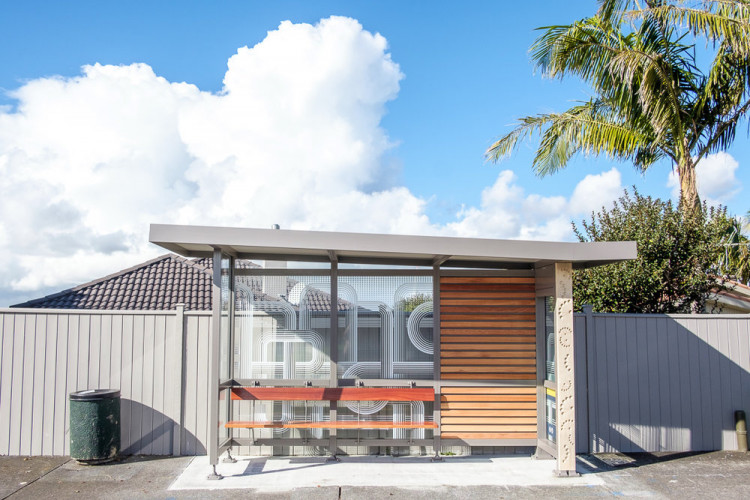Enhancements for bus stops such as landscaping and vegetation, amenity, graffiti deterrents, and treatments, and 'Smart' shelter design.
Table: Summary of enhancements

Download summary of enhancements table [PDF, 214 KB]
Landscaping at bus stops can enhance bus stop amenity but also needs to be balanced with ensuring adequate visibility. Select suitable plant varieties, locate appropriately, and maintain vegetation properly.
Natural landscaping at a bus stop can enhance the bus stop amenity. It is important to provide adequate forward visibility at bus stops because it:
Visibility can commonly be obstructed by overgrown hedges and vegetation, particularly on rural roads.
On the approach side of a stop, limit planting to ground cover or low shrubs less than 0.5m high. Maintenance routines should keep vegetation regularly maintained and sight lines preserved.
Considerations specific to trees and landscaping are that:
In addition, plantings used for landscaping should:
Bus stops are important places in our urban environments. Amenity is important to support them as nice places to be and support the attractiveness of public transport. The amenity at bus stops can be improved by incorporating items such as local art and ‘play’ features, replacing steel panels in shelters with timber pillars, and applying designs on glass panels (see the figures below).
In New Zealand, it is common practice for advertising companies to form contracts with councils that mean they pay for bus shelter maintenance in exchange for advertising rights, which may reduce opportunities for art, play and amenity.
Landscaping and planting can also be incorporated to complement bus stop architecture and enhance the identification of a particular location.

A Bus Stop Moves shelter wrapped with exercise how-to’s. (Source: Allison Lukacsy-Love.)

Shelter with cultural art on the sides, Wellington. (Source: Lorelei Schmitt)

A modular, functional, and aesthetic bus shelter in Auckland that resulted from a design competition for a new suite of shelters. (Source: Design Brand)
All infrastructure components, including furniture, lighting equipment, and timetable and information devices, that come into contact with passengers should be resistant to acts of vandalism and graffiti. This may involve components being applied with anti-graffiti coatings or constructed from non-porous graffiti-resistant materials. The use of appropriate colours or artwork can also deter graffiti.
In some circumstances, vegetation may be planted adjacent to structures or walls to prevent access by vandals.
Shelters can be designed to incorporate or be ready for Wi-Fi, CCTV, digital advertising, digital media, cellular infill, Smart Metering and other opportunities (such as leveraging the shelter as a point of network connection for infrastructure connectivity and monitoring). Digital advertising and digital media are possible revenue generators that can offset the costs of shelter provision or even generate revenue while also improving the customer experience.